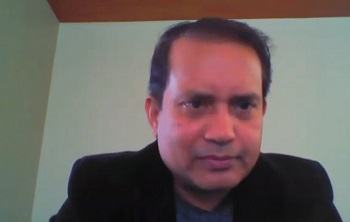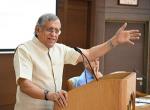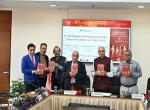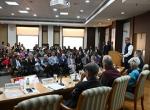On 19 December 2022, the Vivekananda International Foundation (VIF) organised a talk on “Assessment of the Nepal Elections”. Dr Arvind Gupta, Director VIF, gave the introductory remarks, followed by a presentation by Shri Jay Nishaant. Dr Gupta welcomed Shri Jay Nishaant, Lt General R K Sawhney, Dr Sreeradha Datta, Brig Vinod Anand, Rishi Gupta, Aakriti Vinayak and Cchavi Vasisht, Anil Kumar and Aarushi Gupta.
The presentation started with a discussion of key political developments in Nepal. The elections conducted on 20 November 2022 were the second general election under the new constitution. The election was conducted for the House of Representatives (HoR), with 275 seats, and for the Provincial assemblies of seven Nepali Provinces, with 550 seats.
There were two pre-election alliances. The first was the democratic-left alliance, led by Nepali Congress. It constituted of the Communist Party of Nepal (Maoist Centre) (CPN-MC), Communist Party of Nepal (United Socialist), Loktantrik Samajwadi Party, and Rastriya Janamorcha. The second pre-election alliance was led by the Communist Party of Nepal (Unified Marxist–Leninist) (CPN-UML). It was joined by Rastriya Prajatantra Party and Janata Samajbadi Party. Nepali Congress bagged the maximum number of seats in the FPTP election with 89 seats, and CPN-UML came in second with 78 seats. In the PR vote, CPN-UML received the highest popular vote with 34 seats, while Nepali Congress came in second, with 32 seats.
The 2022 elections had a low turnout of 61 percent due to the pre-election alliance confusion as well as the disenchantment of the citizens. The elections were held without much violence and were concluded successfully. The highest number of independent candidates, at 1200, was recorded in the current elections. It also had 225 women candidates standing up for representation in the FPTP elections. 48% of the representation came from the Khas-Arya identity and therefore lacked the Dalit and other minority representation. Since no party could acquire a clear majority in the House of Representatives, according to Article 76 (2) of the Nepal Constitution, a coalition will be formed, and President shall appoint the Prime Minister.
The relationship between the parties and the voters is changing rapidly, and the parties will have to keep up with the youth of Nepal to stay relevant in the Nepali political landscape. The need for political parties to reinvent themselves has become pertinent now. The youth require age-appropriate representation, and the rise of newer parties is inevitable. In the current term, federalism may come under threat, and the voice for the revival of monarchy may get stronger as the alliances are built away from the ideological similarities between parties. However, the established political parties will still be relevant in Nepal's future.








Post new comment